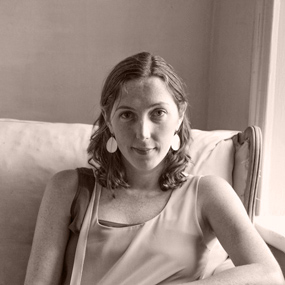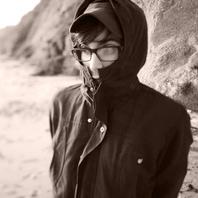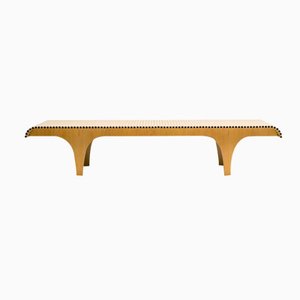Design legend Giulio Cappellini on collaboration, vision, and gut instinct
Il Maestro
Italian designer and creative director Giulio Cappellini would be incredibly imposing if he weren’t so . . . well, lovely. For the past thirty-plus years, he has led one of the world’s most renowned, trendsetting design brands. The Cappellini family business originally launched in 1946, and Giulio joined in the early ’80s, expanding its focus from craft furniture production to international—and game-changing—design manufacturing.
He did so by embracing a tirelessly global perspective, identifying and championing innovative, emerging talents from around the world, and pursuing very personal connections with them. He sought out and nurtured relationships with the likes of Tom Dixon, Jasper Morrison, Nendo, Inga Sempé, and countless others, and the results speak for themselves. From Shiro Kuramata’s Pyramid Chest to Tom Dixon’s rocking Bird Chaise Longue and Marcel Wanders’s Knotted Chair, the Cappellini brand’s portfolio features an incredible, almost unbelievable number of iconic design pieces. In fact, as of this writing, over 30 pieces are included in museum collections around the world.
Mr. Cappellini graciously sat down to speak with us about his career, the ongoing joys of scouting talent, and the legacy he ultimately hopes to leave.
Anna Carnick: Over the last several decades, you’ve helped identify (and support) great talents across the globe, nurturing their talent through collaboration. How do you choose the designers you wish to work with? And is there a unifying thread that connects all the designers you work with?
Giulio Cappellini: The process of discovering new talent is very intuitive. The encounters take place in various ways, but the choice always comes from the heart, instinctively seeing a prototype or a sketch or simply talking to a designer and connecting. I often see an object that I would love to have in my house, and then I know it's perfect for the Cappellini collection. The designers I work with have diverse approaches, and I like to respect that, but there is a thin thread—something at once very visceral and precise—that links the individual products and the larger global project.
AC: Can you give an example or two of a particular design you've seen over the years that you immediately knew you wanted it in your home (and therefore for the brand)?
GC: The S-Chair by Tom Dixon (1991) and Thinking Man’s Chair (1988) by Jasper Morrison, both for Cappellini.
AC: Are there any emerging designers with whom you’re especially impressed at the moment?
GC: There are young and promising new designers all over the world. In Italy, I find Lanzavecchia + Wai incredibly interesting for their cultured and cosmopolitan approach. In northern Europe, I’m impressed by the elegant simplicity of GamFratesi’s design language. And there are many talented, emerging designers in the Far East and South America.
AC: How would you describe your approach to collaborating with designers?
GC: At the beginning of a relationship with a new designer, I never put limits on typologies, materials, or technologies. I simply say to the designer: See the Caps catalog, and try to design something that can easily live therein.
AC: You’ve worked with so many outstanding designers over the years. Are there any particular standouts in your mind—any especially enjoyable or rewarding or special collaborations with other designers?
GC: I’ve been fortunate to meet and work with many designers. In some instances, the relationship began as a friendship that led to the creation of a product, or as a cooperation that led to future collaboration. With others, there were simply friendships that occurred independently; they did not lead to a professional collaboration. I think of Konstantin Grcic, Hella Jongerius, and many others in this way.
AC: I understand you did not originally plan to work for your family business. What changed your mind?
GC: I thought I was a designer and architect. I started to work with the small family business to earn some money, and I found myself interested in the business side. Then suddenly, one evening, I decided to go that route. My decisions are always made instinctively, without much second-guessing.
AC: What was the rationale behind your desire to refocus the Cappellini’s brand’s focus from craft furniture to more worldly designs and manufacturing? And how did you go about achieving such an ambitious change?
GC: Everything happened by chance and by passion, rather than by following a clear, predetermined plan. While traveling, I saw that there were so many wonderful things to do in design. I wanted to support young designers from various parts of the world whose talent was worthy of an international stage. So step by step, thanks to international collaborations, the company grew and became known around the world. And throughout the experience, I’ve been guided by a sense of passion, curiosity, and professionalism.
AC: How does the history of Italian design affect your aesthetic and/or creative approach?
GC: Certainly the knowledge of the history of Italian design and especially of its origins has been instrumental in my training. Also, when I was a student at the Polytechnic of Milan, I was privileged to work for one year in the office of Gio Ponti, the great protagonist of this incredible adventure. But I've always been intrigued by what has happened abroad; behind every major project, there are always great people. In the history of Italian design, the element that has always impressed me most is the great desire of entrepreneurs to innovate, to chart new paths together with strong designers.
AC: You came to head the family business at the height of postmodernism; how did that era’s spirit affect you?
GC: The postmodern movement was a time of rethinking of the classic bourgeois Italian design in Milan. I love the color and the textures, and the postmodern spirit definitely influenced the way I work, giving me the courage to dare.
AC: How do you think the design conversation—or even the industry itself—has changed most since you first started out?
GC: The design and industrial production have changed a lot compared to those times—maybe a little too much! Right now, we are seeing clients’ exasperated search for calm and reassurance, a trend that risks becoming boring and spiritless.
AC: Do you have any predictions for how the industry will change in the next decade or two?
GC: Surely there will be big changes primarily related to the changing expectations of the final consumer, to his freedom to mix different products and to create environments that reflect his personality. Domestic environments and public work related to hospitality are evolving very quickly, so industries and designers have to think carefully about products that meet the real needs of the consumer: beautiful and useful products that, above all, make you smile and dream.
AC: What are the most important lessons you’ve learned since taking over the family business in ’79?
GC: Always believe in what you are doing. Always question. Work with great tenacity—and a bit of irony and humor.
AC: What are the biggest risks you took with the brand? (Looking back, are you happy you did?)
GC: I've always taken risks personally and professionally. I’ve always given my all to both the projects and people I believe in. If I could go back again, I would probably do just what I did, both the good and the errors. [That said], the biggest risk was and still is to bet on new, young designers—to invest in them, to hope they can make good products for Cappellini, and that they can become well known designers worldwide.
AC: If you had to choose one aspect of the Cappellini aesthetic that separates you most from other designers working today, what would it be?
GC: Freedom of expression and the will to innovate forever.
AC: Are there any upcoming projects or events we should know about?
GC: I always like to work on new projects. Today, even more than thinking of a new single product, I like to think of new landscapes that reflect the reality of the way we move in contemporary residential, business, and public spaces.
AC: What legacy would you like to leave?
GC: I'm trying to create—with a diverse program of designers—a collection of classic contemporary designs, products that feel fresh today that will also be timeless bestsellers. I hope that in the future, Cappellini will continue to exist as a multicultural umbrella that reflects the constant evolution of the contemporary way of life.
-
Text by
-
Anna Carnick
Anna is Pamono’s Managing Editor. Her writing has appeared in several arts and culture publications, and she's edited over 20 books. Anna loves celebrating great artists, and seriously enjoys a good picnic.
-
-
Images by
-
Mattia Balsamini
After a number of years freelancing while traveling, Mattia moved back to his home town of Pordenone, Italy, where he continues to pursue his passion for photography. He loves bread, apples, warm weather, and fast alpine skiing.
-




